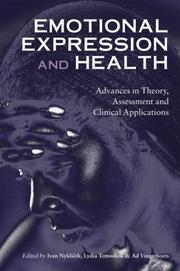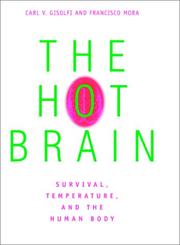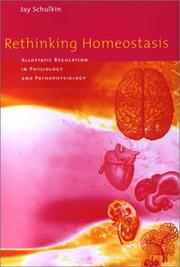| Listing 1 - 10 of 12 | << page >> |
Sort by
|

ISBN: 0121098907 9780080533209 0080533205 1280927240 9781280927249 9786610927241 6610927243 9780121098902 9780123695192 0123695198 9780080575490 0080575498 1283447827 9781283447829 9786613447821 Year: 2000 Publisher: San Diego (Cal.) Academic Press
Abstract | Keywords | Export | Availability | Bookmark
 Loading...
Loading...Choose an application
- Reference Manager
- EndNote
- RefWorks (Direct export to RefWorks)
The Handbook of Self-Regulation represents state-of-the-art coverage of the latest theory, research, and developments in applications of self-regulation research. Chapters are of interest to psychologists interested in the development and operation of self-regulation as well as applications to health, organizational, clinical, and educational psychology.This book pulls together theory, research, and applications in the self-regulation domain and provides broad coverage of conceptual, methodological, and treatment issues. In view of the burgeoning interest and massive research on var
Cognitive psychology --- Social psychology --- Psychologie --- Leermethoden --- Leerdoelstellingen --- Psychopathologie --- Chronische patiënten --- Rekenen --- Leermethode --- Leerdoel --- Chronische patiënt --- Man --- Volwassene --- Self-management (Psychology) --- Self-control --- Self-control. --- Self-discipline --- Self-mastery --- Control (Psychology) --- Discipline --- Management, Self (Psychology) --- Management of self --- Self-help techniques --- #PBIB:2000.1 --- Psychology. --- Self-Regulation. --- Apprentissage --- Modèles théoriques --- Personnalité --- Autoregulation --- Controle de soi --- Maladie chronique --- Motivation

ISBN: 1583918434 020348410X 9780203484104 9781583918432 9781135446765 1135446768 9781135446710 1135446717 9781135446758 113544675X 9781138881471 1138881473 1280045736 9781280045738 9786610045730 6610045739 Year: 2004 Publisher: Hove, East Sussex New York Brunner-Routledge
Abstract | Keywords | Export | Availability | Bookmark
 Loading...
Loading...Choose an application
- Reference Manager
- EndNote
- RefWorks (Direct export to RefWorks)
Emotional Expression and Health looks at the role emotional expression and inhibition may play in staying healthy or falling ill. Written by leading experts in the field, chapters focus on: * how we can measure emotional expression or inhibition and how we can distinguish between their various facets * the role of attachment, and development of emotional information processing* alexithymia, emotional suppression, deception, emotional disclosure, defensiveness, repression, psychological mindedness, and emotional intelligence and self-efficacy. This unique approa
Medicine and psychology. --- Emotions --- Mind and body. --- Body and mind --- Body and soul (Philosophy) --- Human body --- Mind --- Mind-body connection --- Mind-body relations --- Mind-cure --- Somatopsychics --- Brain --- Dualism --- Philosophical anthropology --- Holistic medicine --- Mental healing --- Parousia (Philosophy) --- Phrenology --- Psychophysiology --- Self --- Behavioral medicine --- Psychology and medicine --- Psychology, Applied --- Health aspects. --- Psychological aspects --- Affective Symptoms --- Psychosomatic Medicine --- Physiopathology. --- Physiology. --- Methods. --- Psychophysiologie --- Alexithymie --- Autoregulation --- État émotionnel --- Sante physique --- Strategie d'adaptation --- Émotions. --- Aspect médical
Book
ISBN: 3036555285 3036555277 Year: 2022 Publisher: Basel MDPI - Multidisciplinary Digital Publishing Institute
Abstract | Keywords | Export | Availability | Bookmark
 Loading...
Loading...Choose an application
- Reference Manager
- EndNote
- RefWorks (Direct export to RefWorks)
As many of you already know, traumatic brain injury (TBI) is a growing public health problem of substantial proportions. More than 50 million TBIs occur internationally each year. Across all ages, TBI represents 30–40% of all injury-related deaths, and neurological injury is projected to remain the most important cause of disability from neurological disease until 2030. Severe TBI has a high mortality rate, estimated at 30–40% in observational studies on unselected populations. Survivors experience a substantial burden of physical, psychiatric, emotional, and cognitive disabilities, which disrupt the lives of individuals and their families, and impose huge costs on society. Wide variations in the clinical manifestations of TBI are attributable to the complexity of the brain and to the pattern and extent of damage. Over the past few years, a number of multicenter studies on the topic have emerged, helping to provide a better understanding of the condition. However, it is also clear that much remains to be learned.
Medicine --- Clinical & internal medicine --- traumatic brain injury --- scoring system --- modified early warning score --- mortality --- psychometric properties --- patient-reported outcome measures --- classical test theory --- translation --- linguistic validation --- outcome instruments --- cerebral oximetry --- near-infrared spectroscopy --- cerebrovascular autoregulation --- intracranial pressure --- acute brain injury --- early tracheostomy --- late tracheostomy --- tracheostomy timing --- ventilatory acquired pneumonia --- prehospital --- oxygenation --- hypoxia --- hyperoxia --- emergency medical services --- osmolality --- traumatic brain injury (TBI) --- hypertonic saline --- mannitol --- osmolar gap --- brain death --- death by neurologic criteria --- cerebral blood flow --- CT angiography --- CT perfusion --- COVID-19 pandemic --- treatment efficiency --- emergency department --- seizure --- QTc interval --- spatial QTS-T angle --- brain–heart interaction --- cranioplasty --- cognitive improvement --- neuropsychology
Periodical
Abstract | Keywords | Export | Availability | Bookmark
 Loading...
Loading...Choose an application
- Reference Manager
- EndNote
- RefWorks (Direct export to RefWorks)
Cell metabolism --- Cells --- Metabolic Diseases --- Homeostasis --- metabolism --- Metabolic Diseases. --- Homeostasis. --- Cellules --- Cell metabolism. --- Métabolisme cellulaire. --- metabolism. --- Métabolisme --- Autoregulation --- Diseases, Metabolic --- Thesaurismosis --- Disease, Metabolic --- Metabolic Disease --- Thesaurismoses --- Metabolism --- Cell --- Cell Biology --- Cellular control mechanisms --- Métabolisme cellulaire. --- Métabolisme --- Cytology --- cells. --- metabolic diseases. --- homeostasis. --- biochemistry --- physiology --- anabolism --- biocatalysis --- biosynthesis --- carbohydrate metabolism --- carbon metabolism --- catabolism --- catabolite repression --- copper metabolism --- dealkylation --- energy metabolism --- hormone metabolism --- lipid metabolism --- metabolic detoxification --- metabolic sequestration --- mineral metabolism --- nitrogen metabolism --- pharmacokinetics --- protein metabolism --- steroid metabolism --- vitamin metabolism --- water metabolism --- metabolic flux analysis --- metabolic studies --- metabolites --- metabolome --- metabolomics --- oxidative stress --- cell biology --- acinar cells --- adipocytes --- aleurone cells --- antigen-presenting cells --- bacteriocytes --- blood cells --- bone marrow cells --- bundle sheath cells --- chondrocytes --- chromaffin cells --- chromatophores --- coelomocytes --- cultured cells --- endothelial cells --- epithelial cells --- eukaryotic cells --- fibroblasts --- germ cells --- giant cells --- gonadotropic cells --- granulosa cells --- guard cells --- hemocytes --- hepatocytes --- islets of Langerhans --- keratinocytes --- kidney cells --- Leydig cells --- luteal cells --- mast cells --- myocytes --- neoplasm cells --- neurosecretory cells --- nurse cells --- osteoblasts --- osteoclasts --- phagocytes --- plant root cells --- prokaryotic cells --- Schwann cells --- Sertoli cells --- somatic cells --- splenocytes --- spores --- stem cells --- stromal cells --- tenocytes --- teratocytes --- thecal cells --- vegetative cells --- artificial cells --- cell transplantation --- cell viability --- cellular microenvironment --- physiological regulation --- autoregulation --- glucagon-like peptide 2 --- glucoregulation --- glucose tolerance tests --- metabolic disorders --- noninfectious diseases --- acidosis --- alkalosis --- calcinosis --- carbohydrate metabolism disorders --- dehydration (animal physiology) --- developmental orthopedic disease --- diabetes --- hypercalcemia --- hyperinsulinemia --- hyperkalemia --- hyperketonemia --- hypocalcemia --- hypokalemia --- hypomagnesemia --- hyponatremia --- inherited metabolic diseases --- iron overload --- ketonemia --- ketonuria --- lipid metabolism disorders --- osteomalacia --- refeeding syndrome --- uremia --- malnutrition --- Metabolisme cel·lular --- Citologia --- Homeòstasi
Periodical
Abstract | Keywords | Export | Availability | Bookmark
 Loading...
Loading...Choose an application
- Reference Manager
- EndNote
- RefWorks (Direct export to RefWorks)
Cell death --- Apoptosis --- Homeostasis --- Autophagic vacuoles --- Lysosomes --- Apoptosis. --- Autophagic vacuoles. --- Cell death. --- Homeostasis. --- Lysosomes. --- Autofagie. --- Cell Death. --- Autophagy. --- Autophagy --- Cell Death --- Lysosome --- Death, Cell --- Autophagic Cell Death --- Autophagic Programmed Cell Death --- Autophagy, Cellular --- Macro-autophagy --- Macroautophagy --- Programmed Cell Death, Type II --- Autophagocytosis --- Autophagic Cell Deaths --- Autophagies --- Autophagies, Cellular --- Cell Death, Autophagic --- Cell Deaths, Autophagic --- Cellular Autophagies --- Cellular Autophagy --- Death, Autophagic Cell --- Deaths, Autophagic Cell --- Macro autophagy --- Macro-autophagies --- Macroautophagies --- Cell degeneration --- Cellular Senescence --- Cell organelles --- Biological control systems --- Body fluids --- Physiology --- Cells --- Death (Biology) --- Autoregulation --- Apoptosis, Extrinsic Pathway --- Apoptosis, Intrinsic Pathway --- Programmed Cell Death, Type I --- Apoptoses, Extrinsic Pathway --- Apoptoses, Intrinsic Pathway --- Extrinsic Pathway Apoptoses --- Extrinsic Pathway Apoptosis --- Intrinsic Pathway Apoptoses --- Intrinsic Pathway Apoptosis --- Necrosis --- Clonal Deletion --- Superantigens --- Caspases --- Caspase 1 --- In Situ Nick-End Labeling --- Cellular Apoptosis Susceptibility Protein --- Genes, Transgenic, Suicide --- Life Sciences --- Biology --- ER-Phagy --- Lipophagy --- Nucleophagy --- Reticulophagy --- Ribophagy --- ER Phagy --- Autolysosome --- Autolysosomes --- Autofàgia. --- Mort cel·lular

ISBN: 0585107629 9780585107622 9780804711289 0804711283 9780804712064 0804712069 Year: 2007 Publisher: Stanford Stanford university press
Abstract | Keywords | Export | Availability | Bookmark
 Loading...
Loading...Choose an application
- Reference Manager
- EndNote
- RefWorks (Direct export to RefWorks)
Annotation
Industrial policy --- Politique industrielle --- Affaires et État --- État et industrie --- Industrie --- Industrie et État --- Stratégies de spécialisation intelligente --- Politique minière --- Autorégulation --- Aide à l'ajustement de la commercialisation --- Déréglementation --- Plein emploi --- Priorités industrielles --- Promotion industrielle --- Réorganisation industrielle --- Économie industrielle --- Politique économique --- History. --- Politique publique --- Japan --- Economic bureaucracy. --- Japan. --- M.I.T.I. --- MITI (Ministry of International Trade and Industry) --- Tsūsanshō (Japan) --- 日本. --- Jpaan. --- Japon --- Nihon --- Nippon --- Kai (Japon ; province) --- Hokkaidō (Japon) --- Honshū (Japon) --- Kyūshū (Japon) --- Shikoku (Japon) --- Okinawa (Japon ; région) --- Asie orientale --- Histoire --- Antiquités --- Conditions sociales --- Divisions politiques et administratives --- 331.31 --- 338.40 --- 338.8 --- JP / Japan - Japon --- 658.11 --- 658.11 Kinds and forms of enterprise --- Kinds and forms of enterprise --- History --- Economisch beleid --- Industrieel beleid: algemeenheden --- Economische groei --- J4300.80 --- J4300.90 --- J4301 --- J4400 --- J4646.10 --- Japan: Economy and industry -- history -- Gendai (1926- ), Shōwa period, 20th century --- Japan: Economy and industry -- history -- postwar Shōwa (1945- ), Heisei period (1989- ), contemporary --- Japan: Economy and industry -- policy, legislation, guidelines, codes of behavior --- Japan: Economy and industry -- industry and enterprise --- Japan: Politics and law -- central government -- ministries and departments related to economy and industry --- Au�enhandelspolitik. --- Histoire économique. --- Industrial policy. --- Industrie. --- Industriepolitiek. --- Industriepolitik. --- Industries --- Ministeries. --- Politique industrielle. --- Wachstum. --- Japon. --- Ministry of International Trade and Industry. --- Histoire. --- Geschichte 1925-1975. --- Economic conditions --- Industrial policy - Japan - History
Book
ISBN: 273141250X 273141104X Year: 2022 Publisher: Aix-en-Provence : Presses universitaires d’Aix-Marseille,
Abstract | Keywords | Export | Availability | Bookmark
 Loading...
Loading...Choose an application
- Reference Manager
- EndNote
- RefWorks (Direct export to RefWorks)
Le renouvellement des sources du droit peut être étudié sous deux aspects : qualitatif et quantitatif. Il y a renouvellement des sources du droit d’un point de vue qualitatif lorsque des sources d’une nouvelle espèce, d’un nouveau genre ou même d’une nouvelle nature apparaissent. Il y a renouvellement des sources du droit d’un point de vue quantitatif lorsque des sources préexistantes mais desquelles jaillissait peu de droit deviennent des fleuves de normes, au point de concurrencer les sources ordinaires de règles juridiques que sont la loi et la jurisprudence. En ce livre, le renouvellement des sources du droit est abordé sous l’un et l’autre angles, cela à l’aune d’une branche du droit particulière : le droit de la communication par internet. Observer cette forme de « droit global » est riche d’enseignements à l’égard de l’actualité et, plus encore, de l’avenir du droit. Ainsi de nouveaux objets normatifs, hier encore inconnus des juristes, peuvent ils être étudiés : codes privés, chartes, usages, conditions générales d’utilisation, contrats-types, normes managériales, normes techniques, mais aussi modes alternatifs de résolution des conflits, labels, standards, protocoles, meilleures pratiques, indicateurs, algorithmes, etc. Ces nouveaux objets normatifs et les phénomènes de « guerre des normes », de plurinormativité et d’internormativité qui les accompagnent interrogent l’orthodoxie juridique moderne mais aussi et plus fondamentalement l’État de droit, la démocratie, certains droits et libertés fondamentaux ou encore l’intérêt général. L’internet a condensé le temps et dilué l’espace. Il a ainsi profondément transformé les sociétés ; et l’univers juridique, dans ses différentes dimensions, est nécessairement affecté. Aussi la fréquentation de son droit invite-t-elle à élaborer de nouveaux outils afin de décrire et expliquer les « faits normatifs » qui le constituent. L’observation du droit de la communication par internet est ici au service d’une réflexion…
Law (General) --- autorégulation --- autorités publiques spécialisées --- branches du droit --- contrats privés --- crise de l’État --- crise de la loi --- crise de la puissance --- crise de la souveraineté --- crise du droit --- démocratie --- droit de l’hébergement de sites web --- droit de la communication audiovisuelle --- droit de la propriété intellectuelle --- droit des communications électroniques --- droit des contenus illicites en ligne --- droit des données personnelles --- droit des noms de domaines --- droit des réseaux de communication électroniques --- droit du commerce électronique --- droit en réseau --- droit et libertés fondamentaux --- droit global --- droit international public --- droit mou --- droit postmoderne --- droit souple --- expérience scientifique en droit --- gouvernance de l’internet --- intérêt général --- jugements privés --- jurisprudence --- jurisprudentialisation du droit --- légistique --- légitimité des sources --- lex electronica --- modes alternatifs de résolution des conflits --- mondialisation du droit --- normalisation de l’internet --- normes techniques --- ordre public --- pensée du droit --- pluralisme --- juridique --- pragmatisme juridique --- privatisation du droit --- publicisation du droit --- règlements privés --- relations internationales --- sanctions privées --- sécurité juridique --- séparation des pouvoirs --- société civile --- sources étatiques du droit --- sources européennes du droit --- sources formelles du droit --- sources internationales du droit --- sources privées du droit --- standards et protocoles de l’internet --- technocratie --- théorie du droit --- Union européenne --- usages privés --- droit de la communica
Periodical
ISSN: 00029513 03636135 03636143 03636119 15221563 15221539 15221490 21635773 Year: 1898 Publisher: Washington, D.C.
Abstract | Keywords | Export | Availability | Bookmark
 Loading...
Loading...Choose an application
- Reference Manager
- EndNote
- RefWorks (Direct export to RefWorks)
Volumes for 1898-1941, 1948-56 include the Society's proceedings (primarily abstracts of papers presented at the 10th-53rd annual meetings, and the 1948-56 fall meetings).
Animal physiology. Animal biophysics --- Pathological physiology. Pathogenesis --- Physiology --- Physiologie --- periodicals --- Periodicals --- Périodiques --- Porter, William Townsend, --- Physiology. --- Cardiovascular Physiological Phenomena. --- Cell Physiological Phenomena. --- Homeostasis --- Physiological Phenomena --- Physiology, Comparative. --- #TS:KOME --- #TS:KOMA --- #TS:WDEP --- Comparative Physiology --- Physiological Concepts --- Physiological Phenomenon --- Physiological Process --- Physiological Processes --- Concept, Physiological --- Concepts, Physiological --- Phenomena, Physiological --- Phenomenas, Physiological --- Phenomenon, Physiological --- Physiological Concept --- Process, Physiological --- Processes, Physiological --- Cardiovascular Physiological Concepts --- Cardiovascular Physiological Phenomenon --- Cardiovascular Physiological Process --- Physiology, Cardiovascular --- Cardiovascular Physiologic Processes --- Cardiovascular Physiological Processes --- Cardiovascular Physiology --- Cardiovascular Physiological Concept --- Cardiovascular Physiological Phenomenas --- Concept, Cardiovascular Physiological --- Concepts, Cardiovascular Physiological --- Phenomena, Cardiovascular Physiological --- Phenomenon, Cardiovascular Physiological --- Physiologic Processes, Cardiovascular --- Physiological Concept, Cardiovascular --- Physiological Concepts, Cardiovascular --- Physiological Phenomena, Cardiovascular --- Physiological Phenomenon, Cardiovascular --- Physiological Process, Cardiovascular --- Physiological Processes, Cardiovascular --- Process, Cardiovascular Physiological --- Processes, Cardiovascular Physiologic --- Processes, Cardiovascular Physiological --- Cardiovascular System --- Cell Physiological Phenomenon --- Cell Physiological Process --- Physiology, Cell --- Cell Physiological Processes --- Cell Physiology --- Phenomena, Cell Physiological --- Phenomenon, Cell Physiological --- Physiological Process, Cell --- Physiological Processes, Cell --- Process, Cell Physiological --- Processes, Cell Physiological --- Cells --- physiology. --- physiology --- Cardiovascular system --- Blood --- Lymph --- Cardiovascular Physiology. --- Appareil cardiovasculaire --- Sang --- Système lymphatique --- Cell physiology --- Cell Physiology. --- Cellules --- Cell physiology. --- Physiology, Comparative --- Biological control systems --- Physiologie comparée --- Régulation (Biologie) --- Biological control systems. --- Health Sciences --- General and Others --- Biology --- Cytology, Cell Biology --- Metabolism --- Micro and Molecular Biology --- Life Sciences --- Genetics --- Genomics --- Immunology --- Chemistry --- Biochemistry --- ONLY SEPARATES (no collection) --- Massachusetts --- USA --- periodical --- societies --- Histology. Cytology --- Health Sciences. --- Micro and Molecular Biology. --- Life Sciences. --- Périodiques --- MDPHYSIO --- periodicals. --- Cardiovascular Physiological Phenomena --- Cell Physiological Phenomena --- Cell function --- Cytology --- Body fluids --- Lymphatics --- Fear of blood --- Circulatory system --- Vascular system --- Circulation --- Autoregulation --- Comparative physiology --- Medicine, Comparative --- Zoology --- Biocybernetics --- Biofeedback --- Biological cybernetics --- Biological regulation --- Control biophysics --- Control systems, Biological --- Control theory in biology --- Regulation, Biological --- Biological systems --- Control theory --- Cybernetics --- Feedback control systems --- Nervous system --- Physiology - Periodicals --- Sistema cardiovascular. --- Malalties cardiovasculars. --- Fisiologia. --- Fisiologia cel·lular. --- Sistema cardiovascular --- Malalties cardiovasculars --- Fisiologia --- Fisiologia comparada. --- Sistemes de control biològic. --- Physiologie. --- Fysiologie.

ISBN: 0262515342 0262071983 0262273888 058532056X 026229334X 9780262273886 9780585320564 9780262071987 9780262515344 9780262071987 Year: 2000 Publisher: Cambridge, Mass. MIT Press
Abstract | Keywords | Export | Availability | Bookmark
 Loading...
Loading...Choose an application
- Reference Manager
- EndNote
- RefWorks (Direct export to RefWorks)
Annotation
Genetic Processes --- Body Temperature Changes --- Biological Processes --- Central Nervous System --- Homeostasis --- Physiological Processes --- Adaptation, Physiological --- Body Temperature --- Biological Phenomena --- Signs and Symptoms --- Physiological Phenomena --- Adaptation, Biological --- Nervous System --- Genetic Phenomena --- Pathological Conditions, Signs and Symptoms --- Phenomena and Processes --- Anatomy --- Diseases --- Brain --- Acclimatization --- Body Temperature Regulation --- Biological Evolution --- Fever --- Human Anatomy & Physiology --- Health & Biological Sciences --- Physiology --- Hyperthermia --- Pyrexia --- Fevers --- Hyperthermias --- Pyrexias --- Evolution, Biological --- Regulation, Body Temperature --- Temperature Regulation, Body --- Heat Loss --- Thermoregulation --- Body Temperature Regulations --- Heat Losses --- Loss, Heat --- Losses, Heat --- Regulations, Body Temperature --- Temperature Regulations, Body --- Thermoregulations --- Acclimation --- Encephalon --- Brains --- Encephalons --- Anatomies --- Symptoms and General Pathology --- Genetic Concepts --- Genetic Phenomenon --- Genetic Process --- Concept, Genetic --- Concepts, Genetic --- Genetic Concept --- Phenomena, Genetic --- Phenomenon, Genetic --- Process, Genetic --- Processes, Genetic --- Nervous Systems --- System, Nervous --- Systems, Nervous --- Adaptation, Biologic --- Biological Adaptation --- Biologic Adaptation --- Physiological Concepts --- Physiological Phenomenon --- Physiological Process --- Concept, Physiological --- Concepts, Physiological --- Phenomena, Physiological --- Phenomenas, Physiological --- Phenomenon, Physiological --- Physiological Concept --- Process, Physiological --- Processes, Physiological --- Symptoms and Signs --- Biologic Phenomena --- Biological Phenomenon --- Biological Process --- Phenomena, Biological --- Phenomena, Biologic --- Phenomenon, Biological --- Process, Biological --- Processes, Biological --- Organ Temperature --- Body Temperatures --- Organ Temperatures --- Temperature, Body --- Temperature, Organ --- Temperatures, Body --- Temperatures, Organ --- Adaptation, Physiologic --- Adaptations, Physiologic --- Adaptations, Physiological --- Physiological Adaptation --- Physiologic Adaptation --- Physiologic Adaptations --- Physiological Adaptations --- Autoregulation --- Cerebrospinal Axis --- Axi, Cerebrospinal --- Axis, Cerebrospinal --- Central Nervous Systems --- Cerebrospinal Axi --- Nervous System, Central --- Nervous Systems, Central --- System, Central Nervous --- Systems, Central Nervous --- Body Temperature Change --- Change, Body Temperature --- Changes, Body Temperature --- Temperature Change, Body --- Temperature Changes, Body --- Malignant Hyperthermia --- Sociobiology --- Thermoreceptors --- Climate --- Molecular Biology --- Temperature --- Adaptive Plasticity --- Phenotypic Plasticity --- Plasticity, Adaptive --- Plasticity, Phenotypic --- Body temperature --- Brain. --- Evolution. --- Regulation. --- NEUROSCIENCE/General --- Philosophy --- Creation --- Emergence (Philosophy) --- Teleology --- Cerebrum --- Mind --- Central nervous system --- Head --- Regulation of body temperature --- Temperature adaptation --- Biological control systems

ISBN: 0262194805 0262283271 0585446601 0262293587 9780262283274 9780585446608 9780262194808 9780262293587 Year: 2003 Publisher: Cambridge, Mass. MIT Press
Abstract | Keywords | Export | Availability | Bookmark
 Loading...
Loading...Choose an application
- Reference Manager
- EndNote
- RefWorks (Direct export to RefWorks)
Homeostasis, a key concept in biology, refers to the tendency toward stability in the various bodily states that make up the internal environment. Examples include temperature regulation and oxygen consumption. The body's needs, however, do not remain constant. When an organism is under stress, the central nervous system works with the endocrine system to use resources to maintain the overall viability of the organism. The process accelerates the various systems' defenses of bodily viability, but can violate short-term homeostasis. This allostatic regulation highlights our ability to anticipate, adapt to, and cope with impending future events. In Rethinking Homeostasis, Jay Schulkin defines and explores many aspects of allostasis, including the wear and tear on tissues and accelerated pathophysiology caused by allostatic overload. Focusing on the concept of motivation and its relationship to the central nervous system function and specific hormonal systems, he applies a neuroendocrine perspective to central motive states such as cravings for water, sodium, food, sex, and drugs. He examines in detail the bodily consequences of the behavioral and neuroendocrine regulation of fear and adversity, the endocrine regulation of normal and preterm birth, and the effects of drug addiction on the body. Schulkin's presentation of allostasis lays the foundation for further study.
Homeostasis. --- Neuroendocrinology. --- Psychophysiology. --- Biological control systems. --- Neurosecretory Systems --- Behavioral Sciences --- Endocrine System --- Nervous System --- Physiological Processes --- Psychological Phenomena and Processes --- Mind-Body Therapies --- Physiology --- Psychiatry and Psychology --- Physiological Phenomena --- Behavioral Disciplines and Activities --- Anatomy --- Complementary Therapies --- Biological Science Disciplines --- Natural Science Disciplines --- Therapeutics --- Phenomena and Processes --- Disciplines and Occupations --- Analytical, Diagnostic and Therapeutic Techniques and Equipment --- Psychophysiology --- Homeostasis --- Human Anatomy & Physiology --- Health & Biological Sciences --- physiology. --- Autoregulation --- Mind-Body Relationship (Physiology) --- Physiologic Psychology --- Physiological Psychology --- Psychology, Physiologic --- Mind-Body Relations (Physiology) --- Psychology, Physiological --- Mind Body Relations (Physiology) --- Mind Body Relationship (Physiology) --- Mind-Body Relation (Physiology) --- Mind-Body Relationships (Physiology) --- Physiologic Psychologies --- Psychologies, Physiologic --- Relation, Mind-Body (Physiology) --- Relations, Mind-Body (Physiology) --- Relationship, Mind-Body (Physiology) --- Relationships, Mind-Body (Physiology) --- Neuroendocrine System --- Neuroendocrine Systems --- Neurosecretory System --- System, Neuroendocrine --- System, Neurosecretory --- Systems, Neuroendocrine --- Systems, Neurosecretory --- Therapy --- Treatment --- Therapeutic --- Therapies --- Treatments --- Disease --- Natural Sciences --- Physical Sciences --- Discipline, Natural Science --- Disciplines, Natural Science --- Natural Science --- Natural Science Discipline --- Physical Science --- Science, Natural --- Science, Physical --- Sciences, Natural --- Sciences, Physical --- Biologic Sciences --- Biological Science --- Science, Biological --- Sciences, Biological --- Biological Sciences --- Life Sciences --- Biologic Science --- Biological Science Discipline --- Discipline, Biological Science --- Disciplines, Biological Science --- Life Science --- Science Discipline, Biological --- Science Disciplines, Biological --- Science, Biologic --- Science, Life --- Sciences, Biologic --- Sciences, Life --- Alternative Therapies --- Therapy, Alternative --- Therapy, Complementary --- Alternative Medicine --- Complementary Medicine --- Medicine, Alternative --- Medicine, Complementary --- Therapies, Alternative --- Therapies, Complementary --- Anatomies --- Physiological Concepts --- Physiological Phenomenon --- Physiological Process --- Concept, Physiological --- Concepts, Physiological --- Phenomena, Physiological --- Phenomenas, Physiological --- Phenomenon, Physiological --- Physiological Concept --- Process, Physiological --- Processes, Physiological --- Mind-Body Medicine --- Mind Body Medicine --- Mind Body Therapies --- Mind-Body Therapy --- Therapies, Mind-Body --- Therapy, Mind-Body --- Psychologic Processes and Principles --- Nervous Systems --- System, Nervous --- Systems, Nervous --- Endocrine Systems --- System, Endocrine --- Systems, Endocrine --- Proxemics --- Behavioral Science --- Proxemic --- Science, Behavioral --- Sciences, Behavioral --- Biocybernetics --- Biofeedback --- Biological cybernetics --- Biological regulation --- Control biophysics --- Control systems, Biological --- Control theory in biology --- Regulation, Biological --- Behavioral physiology --- Physiological psychology --- Physiopsychology --- Somatopsychics --- therapy --- Psychosomatic Medicine --- Mind-Body Relations, Metaphysical --- Neurosecretion --- Spiritual Therapies --- Psychologic Processes --- Psychological Processes --- Phenomena, Psychological --- Processes, Psychologic --- Processes, Psychological --- Psychological Phenomenas --- Psychological Processe --- Biological systems --- Control theory --- Cybernetics --- Feedback control systems --- Nervous system --- Psychobiology --- Mind and body --- Endocrinology --- Neurology --- Neurohormones --- Biological control systems --- Body fluids --- NEUROSCIENCE/General
| Listing 1 - 10 of 12 | << page >> |
Sort by
|

 Search
Search Feedback
Feedback About UniCat
About UniCat  Help
Help News
News